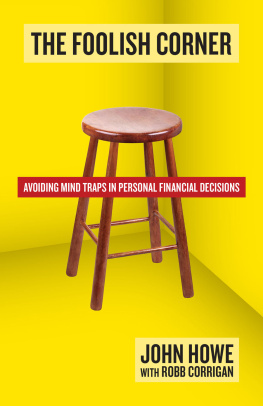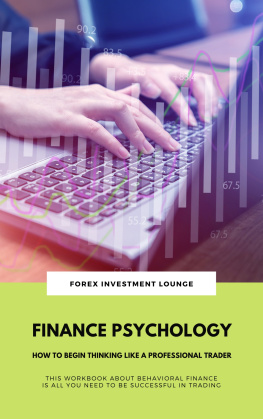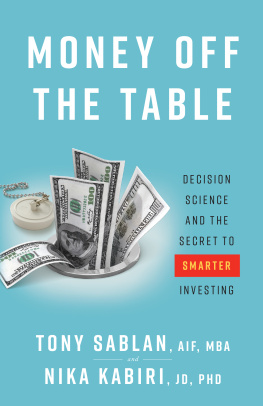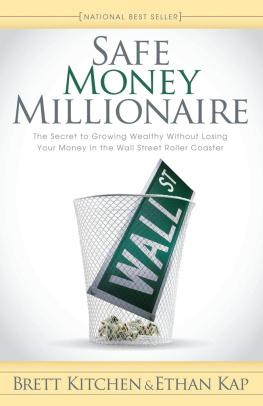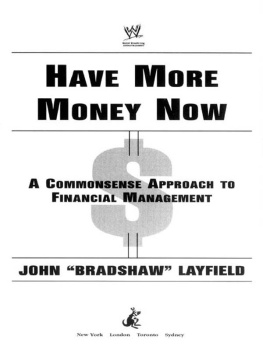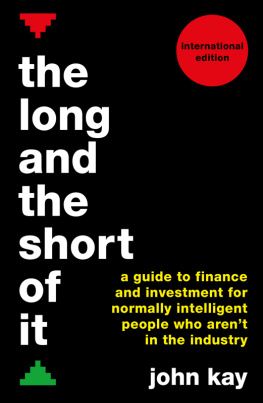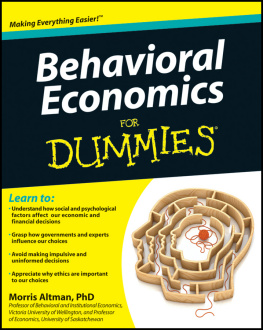Guide
List of Figures
Table of Contents
Copyright 2017 John Howe and Robb Corrigan All rights reserved.
No part of this book may be reproduced, or stored in a retrieval system, or transmitted in any form or by any means, electronic, mechanical, photocopying, recording, or otherwise, without express written permission of the publisher.
Published by Stuart Charles Group, Columbia, Missouri
Edited and Designed by Girl Friday Productions
www.girlfridayproductions.com
Editorial: Emilie Sandoz-Voyer
Interior Design: Rachel Christenson
Cover Design: Paul Barrett
Image Credits: cover ID1974/Shutterstock
ISBN-13: 978-0-9985107-0-5
ISBN-10: 0-9985107-0-X
eISBN: 978-0-9985107-1-2
Library of Congress Control Number: 2016921482
First Edition
To those who wish to understand themselves better and avoid ending up in a foolish corner
CONTENTS
Escape from the Hedonic Treadmill
A Dilemma: To Eat the Food or the Menu?
Chronic but Curable
Musings on Patterns
How to Control Your Inner Lemming
When Are They Hindrances and When Not?
Behavioral Aspects of Saving for Retirement
The Sunk Cost Fallacy and Other Costly Mistakes
Drinking Drops from a Deluge
Check Out the List
INTRODUCTION
There is a foolish corner in the brain of the wisest man.
Attributed to Aristotle
I have spent the last thirty-five years teaching finance, doing economic research, and serving as a financial consultant. In that time, Ive tried to pay attention to what works and what doesnt when it comes to how we humans behave around money. One thing Ive noticed that doesnt work is people effectively giving away money or other assets when they dont mean to. Why would we do such a foolish thing? Its not in our self-interest, thats for sure. But as psychologists, economists, and others who research human decision making have found time and again, we humans are often exceedingly good at shooting ourselves in the foot when it comes to money. Of course, we are good at other things toolots of things, more positive things. But financial foot-shooting we are experts in, even though we dont want to be.
I would like for there to be more intact toes in this world: thats why I have written this book. It is intended for readers like you: intelligent and inquisitive people who might have an inkling that when they contemplate designing a retirement strategy for years ahead, or even consider buying a new washing machine next week, there are unseen psychological forces at work that can negatively affect how those decisions play out. Unfortunately, most of us typically become aware of these forces only after the damage is done, if we do at all.
This book, therefore, is for people who want to identify, explore, and then master those forces. This is the book to read before opening other books that get into the gritty details about stock investing or 401(k)s and the like.
Just to give you a flavor of what I am talking about, Ill start with a few questions:
- Do you find that you hate a $100 decline in your savings account more than you love a sudden addition of $100? Thats because all of us have a natural tendency toward something called loss aversion.
- Do you tend to follow the herd in your financial decision making? No? Not even a bit? Are you sure? Ill explain why no one should believe you!
- Do you know how you might be making yourself perpetually unhappy with what you own and your place in the socioeconomic pecking order? I do, and will show you an antidote to that poisonous thinking.
As you can sense, I will be using some academic vocabulary, but I will make plain exactly what the terms mean. Much of this terminology comes from a fast-growing segment of economics research called behavioral finance. This fascinating area of study is largely based on the notion that human psychology, with all its emotional peculiarities, has much more to do with our financial decision-making processes than do standard economic models based on purely rational visions of markets and their human agents. Those visions have their value and place, but increasingly we economists are discovering that behind them the more complex human psyche is truly controlling the scene. Thats why many of the contributors to behavioral finance are, in fact, psychologists.
Throughout this book I will introduce interesting new research from behavioral finance that helps illuminate dimly lit terrain that could use more light. That said, this book is not intended to be an encyclopedia of behavioral finance, but rather an introduction to some of the more important, practical, and relevant ideas from that field related to financial decision makingwith many pertinent lessons included from my years of pondering that topic. Important terms and concepts have been bold-faced or italicized along the way and can be found in a summary at the back for quick reference.
Someone who has done even more pondering than I about this topic is Daniel Kahneman, who is without question the acknowledged godfather of behavioral finance. Now in his eighties, Kahneman is a psychologist who won the Nobel Memorial Prize in Economic Sciences in 2002 for his work on the cognitive biases that all humans share to one degree or another and how they affect our decisions. In 2011, Kahneman published the book Thinking, Fast and Slow, which summarizes much of his lifes work and went on to become a New York Times bestseller.
In his book, Kahneman uses some basic terms that have become accepted as common language among behavioral finance experts, sometimes with slight alterations. For our purposes, the most important of these terms concerns his description of human decisions as arising from two systems. System 1 is fast, visceral, and largely involuntary. System 2 is more contemplative, reflective, and rational. For example, selling a stock that has dropped in value because of a fear of further loss is System 1 in action. Selling a stock because analysis shows that the companys prospects have changed for the worse is System 2 in action.
The distinction between the two systems is important because System 1 is affected by a larger and more insidious range of mental biases and other cognitive limitations. My approach in this book is, first, to effectively make you aware of how System 1 is influencing your life, and, second, to provide you with the tools for making more decisions with System 2. I will continue to use some of Kahnemans helpful terminology here and there as we go along.
This book will be of value to a wide range of people. For starters, it will be useful to baby boomers and postbaby boomers (Generation Xers), who, as a whole, have not yet saved enough for retirement. Better decisions on their part may mean that they actually have the chance to retire when they want to. Those just starting their careers will be interested too. If they can head off on a good path just out of college, they will lay a solid financial foundation that should serve them well through the inevitable cycles of good and bad economic times. All should be able to learn some tricks within these pages to help keep from stumbling into a foolish corner.

